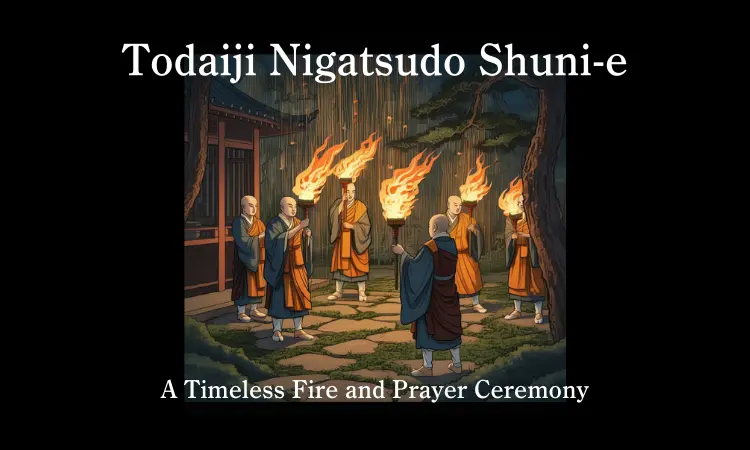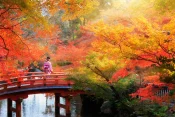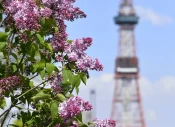Todaiji Nigatsudo Shuni-e: A Timeless Fire and Prayer Ceremony
Todaiji Temple, located in Nara, Japan, is one of the country’s most iconic cultural landmarks, known especially for its massive Great Buddha Hall (Daibutsuden), which houses one of the largest bronze Buddha statues in the world. Nestled within the temple complex is Nigatsudo, a smaller but no less significant hall, where the centuries-old Shuni-e ceremony takes place.
Shuni-e, often referred to as Omizutori, is an annual Buddhist ritual held each March and has been performed without fail for over 1,250 years. This ancient ceremony, filled with fire and prayer, symbolizes purification and serves as a means for monks to atone for the sins of humanity, while also welcoming spring to the region.
History and Significance of Shuni-e
The origins of Shuni-e date back to 752 AD, initiated as a means for monks to atone for people’s sins and offer prayers for peace and prosperity throughout the nation. For over twelve centuries, Shuni-e has been an unbroken tradition, embodying the continuity of Japanese spirituality and community care.
The ritual also marks the change of seasons, symbolizing the coming of spring in Nara, and has become an important cultural event for both locals and visitors. With its blend of solemn ritual, vibrant spectacle, and community involvement, Shuni-e has been recognized as an intangible cultural heritage, deeply rooted in Buddhist practice and Japanese tradition.
Ceremony Highlights: The Otaimatsu and Omizutori
Otaimatsu (Fire Ceremony): The fire ceremony is perhaps the most dramatic element of Shuni-e. Each night during the ceremony, giant torches—some up to eight meters long—are carried along the wooden balcony of Nigatsudo. The monks wield these blazing torches above their heads, showering the area below with sparks. This dramatic display is said to purify the audience, ward off evil spirits, and bring good fortune to those who watch it. The smell of burning pine, the sight of swirling flames, and the anticipation of the next burst of sparks make for a sensory experience that is both thrilling and deeply spiritual.
Omizutori (Water Drawing Ceremony): The Omizutori ritual is equally symbolic, involving the drawing of sacred water from the Wakasa well, located within the Nigatsudo temple grounds. The water is believed to have healing properties and is used in offerings to the deities. It symbolizes purification and renewal, not just for the participants but also for the entire community. The ritual has such an impact that it even lent its name—Omizutori—to the entire Shuni-e event.
Visitor Information: How to Experience Shuni-e
Event Schedule: The Shuni-e ceremony takes place from March 1st to March 14th each year. The most captivating element, the Otaimatsu fire ceremony, is held every evening, with March 12th being particularly special as the largest torches are used on that day.
Viewing Spots: The best viewing spots for the Otaimatsu ceremony are from the base of Nigatsudo, where you can see the monks swinging the torches overhead. Arriving early is recommended, as many visitors gather to witness this iconic ritual. Standing by the steps leading up to Nigatsudo also provides a unique view of the fiery display.
Tips for Attending: Due to the popularity of the event, it’s best to arrive early—especially on March 12th. The ceremony takes place in the evening, so dressing warmly is essential as temperatures can drop considerably after sunset. Also, as Shuni-e is a solemn religious event, respecting the monks and following guidelines for silence during the rituals is crucial.
Cultural Etiquette and Significance for Visitors
Cultural Etiquette: When attending Shuni-e, remember that this is a deeply spiritual event for both the monks and the local community. Refrain from using flash photography, and try to stay silent during key moments of the ceremony. Observing respectfully will ensure that the sanctity of the event is maintained.
Significance for Foreign Visitors: Shuni-e is more than just a spectacle—it is a living tradition that has been carried on for over a millennium. For foreign visitors, it provides a rare opportunity to witness a Buddhist ritual that has shaped the cultural and spiritual life of Nara for centuries. The power of the fire ceremony and the tranquility of the water-drawing ritual offer a glimpse into the balance between the forces of nature, purification, and prayer that define much of Japanese culture.
Surrounding Attractions and Local Cuisine
Todaiji and Nara Park: No visit to Shuni-e is complete without exploring the rest of the Todaiji temple grounds. Be sure to visit the Great Buddha Hall, where the awe-inspiring bronze Buddha resides. Just nearby is Nara Park, famous for its friendly, freely roaming deer. These deer are considered sacred messengers of the gods and are an iconic part of the Nara experience.
Local Cuisine: After attending Shuni-e, visitors can enjoy some of Nara’s traditional delicacies. Kakinoha-zushi, sushi wrapped in persimmon leaves, is a must-try for its unique flavor. Yomogi mochi, a sweet rice cake flavored with mugwort, is another popular treat that perfectly captures the essence of Nara’s culinary heritage. Many of these dishes can be found in small eateries around Todaiji and Nara Park, providing a perfect way to relax after the evening’s excitement.
●Related Posts
→Nara’s traditional delicacies(Nara Gourmet Guide)
Conclusion
The Shuni-e ceremony at Nigatsudo, Todaiji, is a remarkable blend of fire, water, prayer, and history. It symbolizes purification, community prayer, and cultural continuity, resonating deeply with all who attend. Experiencing Shuni-e offers a profound connection to Japanese heritage, as visitors witness a tradition that has withstood the test of time, carried forward by generations of devoted monks. Whether you are spiritually inclined or simply captivated by cultural history, Shuni-e at Todaiji is a must-see event that leaves a lasting impression.









